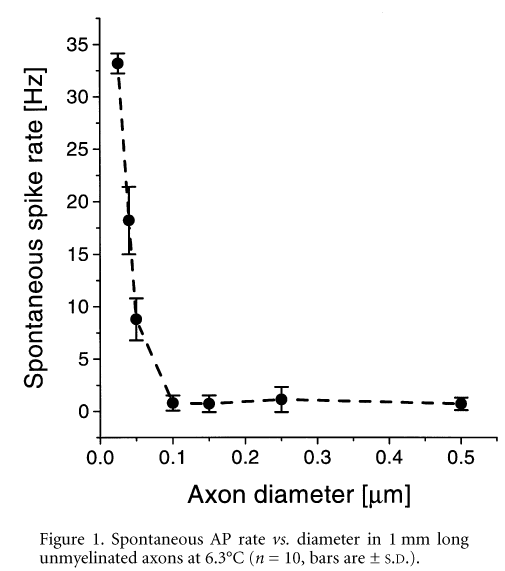The action potential (AP) propagates by the concerted action of voltage-gated ion channels, whose probabilistic behaviour introduces noise (Chow & White, 1996). We investigated whether these fluctuations determine the lower limit of the operational diameter in unmyelinated axons. Since recording from fine axons is technically difficult, we developed a stochastic simulator of an unmyelinated axon using a biophysically realistic model of stochastic ion channel behaviour (Faisal et al. 2002). It also allows us to explore the properties of unnaturally fine axons.
We simulated axons of diameters between 0.025 and 3 mm with Na and K channel densities of 60 and 18 mm-2, respectively, and a single-channel conductance of 20 pS. The spontaneous AP rate goes up as the diameter is reduced (Fig. 1) because, with axoplasmic resistance proportional to diameter squared, less current is dissipated along the axon. Thus a spontaneously activated channel can depolarise the membrane to threshold if it remains open long enough to charge the membrane capacitance.
Below a critical diameter of 0.1 mm the axon can be driven to AP threshold by a single ion channel, to produce spontaneous AP rates > 5 Hz. We verified that this effect is insensitive to specific channel densities, by doubling and halving the densities independently.
The critical diameter 0.1 mm relates well to anatomical data, as the thinnest known fibres are 0.1 mm in diameter (Berthold, 1978).
A.A.F. is supported by a Boehringer-Ingelheim Fonds PhD Fellowship and the BBSRC.

